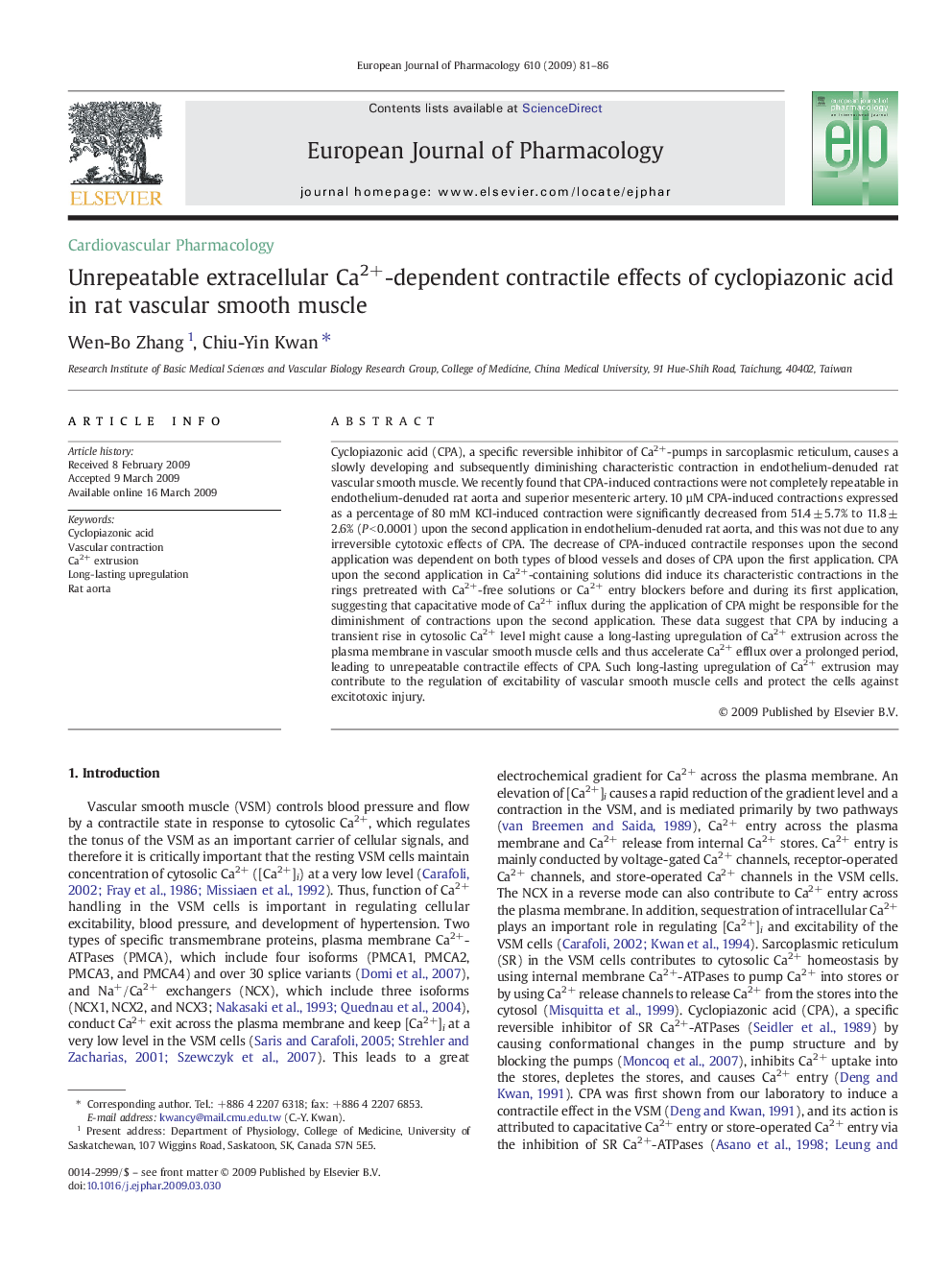| Article ID | Journal | Published Year | Pages | File Type |
|---|---|---|---|---|
| 2534337 | European Journal of Pharmacology | 2009 | 6 Pages |
Cyclopiazonic acid (CPA), a specific reversible inhibitor of Ca2+-pumps in sarcoplasmic reticulum, causes a slowly developing and subsequently diminishing characteristic contraction in endothelium-denuded rat vascular smooth muscle. We recently found that CPA-induced contractions were not completely repeatable in endothelium-denuded rat aorta and superior mesenteric artery. 10 µM CPA-induced contractions expressed as a percentage of 80 mM KCl-induced contraction were significantly decreased from 51.4 ± 5.7% to 11.8 ± 2.6% (P < 0.0001) upon the second application in endothelium-denuded rat aorta, and this was not due to any irreversible cytotoxic effects of CPA. The decrease of CPA-induced contractile responses upon the second application was dependent on both types of blood vessels and doses of CPA upon the first application. CPA upon the second application in Ca2+-containing solutions did induce its characteristic contractions in the rings pretreated with Ca2+-free solutions or Ca2+ entry blockers before and during its first application, suggesting that capacitative mode of Ca2+ influx during the application of CPA might be responsible for the diminishment of contractions upon the second application. These data suggest that CPA by inducing a transient rise in cytosolic Ca2+ level might cause a long-lasting upregulation of Ca2+ extrusion across the plasma membrane in vascular smooth muscle cells and thus accelerate Ca2+ efflux over a prolonged period, leading to unrepeatable contractile effects of CPA. Such long-lasting upregulation of Ca2+ extrusion may contribute to the regulation of excitability of vascular smooth muscle cells and protect the cells against excitotoxic injury.
